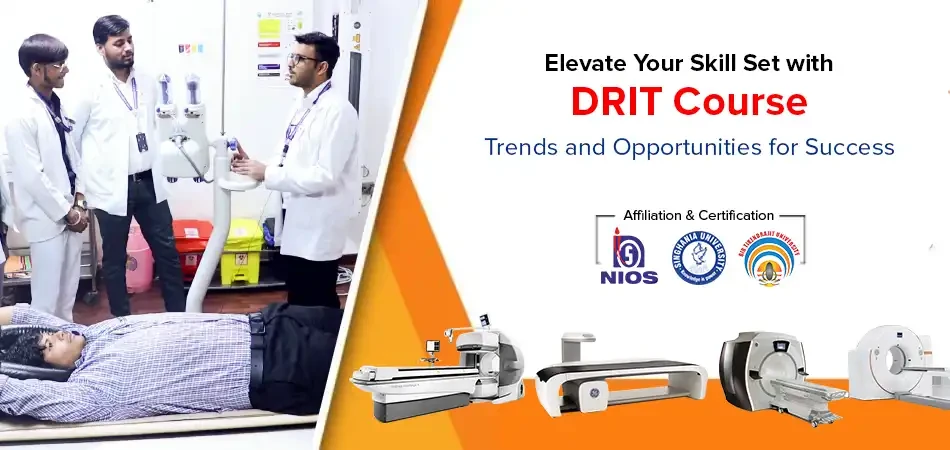
The Diploma in Radio Imaging Technology course allows Candidates to gain a basic understanding of radiography and imaging techniques, which will help candidates be more accurate in diagnosing medicine.
Radio imaging technology studies the methods and procedures used to obtain Internal photos of the parts and organs of the human body and their function in clinical procedures (medical practices aimed at diagnosing and examining disease) or medical science that has human anatomy and physiology. This is done for therapeutic objectives such as research on the body's normal architecture.
The course teaches Candidates about radio imaging techniques, as well as traditional and modern radiographic equipment, and how to conduct an ethical diagnostic procedure. The Candidates learn advanced and specialised technical training in medical imaging techniques such as MRI and CT scans, and other routine operations.
Duration: This is a 2 Years Diploma course in Medical Radio imaging Technology.
Eligibility: The candidate should have passed 10+2 in Physics, Chemistry, Biology or Maths.
DRIT FIRST YEAR
DRIT SECOND YEAR
It's essential to note that admission measures can vary depending on the University/institution and program, and it is advisable to check the specific conditions for the program you're interested in. Additionally, some institutions may have additional conditions, such as references or portfolio submissions, so it is important to research and compare programs to decide which one is the best fit for you and your goals.
The scope of Radio Imaging Technology contains a wide range of diagnostic and medical procedures that operate various imaging techniques to produce images of the human body. Some of the essential areas of focus within the field include:
The scope of medical radio imaging technology continues to evolve and expand as new imaging modalities and technologies are developed and introduced. Medical radio imaging technologists play a critical role in the diagnostic and therapeutic process, working closely with other healthcare professionals to provide the best possible patient care.
| Course Name | Diploma in Radiography and Imaging Technology |
| Course Level | Diploma |
| Course Duration | 2 years |
| Course Type | Yearly |
| Eligibility | 10+2 Passed in science stream with at least 50% aggregate |
| Admission Process | Merit-based / Entrance-exam based |
| Average Fees | 1,00,000 Per Annum |
| Average Salary | INR 3 to INR 10 LPA |
| Top Recruiting Areas | Government hospitals and Private hospitals, Radiography Centres, clinics, medical labs, diagnostic centres, research institutes |
| Top Job Positions | As Marketing Executive, Radiographer, medical consultant, Imaging Research assistant manager, sales manager, X-ray technician etc. |
| Top Recruiters | AIIMS, Max Healthcare, Park Hospitals, HLL Life Care Limited, Fortis Hospital etc. Candidates can also go abroad after completing their degree in this course. |
1.Who is eligible for a Diploma in medical imaging technology?
10+2nd Passed in the science stream with at least 50% aggregate. Some Institutions also conduct entrance exams. candidates may also appear in Entrance exams for admission.
2.Why is the Radiography salary so high?
Number of tests patients are subject to, radiologists with their diagnostic centres can make a stunning package. The cost of one MRI doesn't cost less than Rs 10,000. Do even 10 MRIs a day, you can earn Rs 1 lakh," So we can understand the earnings after Pursuing these courses.
3.Do radiologists need NEET?
No, NEET is not needed in pursuing any Radiography courses. Admission to Different universities is based on merit list criteria and the university's entrance exam.
4.Can I do an MSC radiography after the DRIT course?
No, to pursue an MSc. in Radiography you can get admission in BSc. RIT Lateral entry program thereafter you may pursue an MSc. in Radiography.